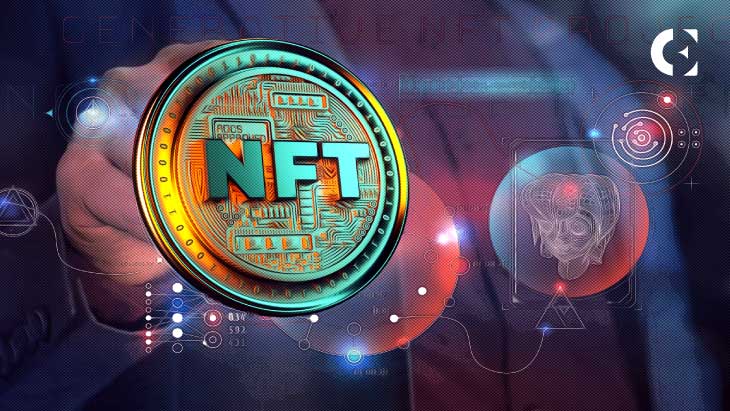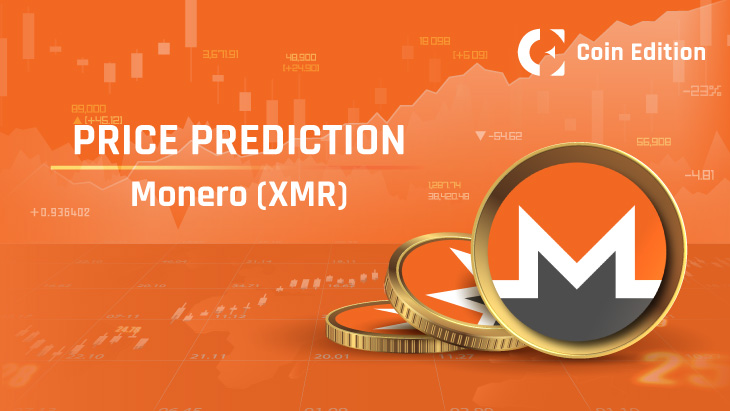Over the years, the digital world has changed a lot with the help of blockchain technology and the rise of Web3. One of the most exciting developments is the growth of Non-Fungible Tokens (NFTs), used in areas like art, games, virtual real estate, and even ownership of ideas. The NFTs primarily cannot be replicated, making them a unique digital asset.
With NFTs, artists, game developers, and collectors can buy, sell, or trade digital tokens without any hindrance. As the sector continues to grow, it is important to understand what they are and how they work.
Table of contents
What Are Non-Fungible Tokens (NFTs)?
Unlike cryptocurrencies like Bitcoin and Ethereum, NFTs are unique and cannot be replaced or exchanged. Further, each NFT represents a specific digital item with unique metadata, distinguishing it from others, and making it an irreplaceable asset.
NFTs have become the modern gateway to collecting, owning, and showcasing digital assets like art, music, videos, and more. What makes NFTs special is that they grant exclusive ownership rights. Once purchased, the NFT belongs to the buyer, proving its origin and authenticity, thus opening new doors for artists, creators, and collectors.
Moreover, NFTs also remove intermediaries, allowing creators to connect directly with the audience. This simplifies transactions, thus creating new revenue streams for artists, musicians, and developers. Like cryptocurrencies, NFTs store ownership details securely on-chain, allowing transparent verification and seamless transfers of digital property.
History of NFTs
Although NFTs have gained popularity now, they have been in the crypto ecosystem since 2014. The sector gained traction in 2017, with the release of digital art pieces like CryptoPunks and Rare Pepes. Post-COVID, the NFT market boomed following endorsements from celebrities like singer-rapper Snoop Dogg and hotelier Paris Hilton. From 2022, the NFT marketplace faced several challenges, including oversaturation, fraud, and scams. The latter witnessed a drastic dip in NFT adoption, making many digital assets worthless. Although the NFT space witnessed occasional surges, it couldn’t cross its 2021 peak.
Today, the NFT space witnesses a wider range of applications, which includes AI-generated NFTs and real-world asset (RWA) NFTs. Also, Web3 is being scrutinized as a potential catalyst for revitalizing the NFT market. Though the trading volume has reduced, buyers and sellers remain active. In fact, a recent report stated that the global NFT market could reach $608.6M in revenue, with over 11.6 million users.
The First NFT
In 2014, the first NFT, Quantum, was created by digital artists Kevin McCoy and his wife Jennifer. A generative artwork, Quantum, was shaped like an octagon, with bold colours, that created a mesmerizing visual effect. In order to sell the piece in its digital form, McCoy required provenance, a document that validates the ownership of the art.
However, since provenance documents were not available, McCoy sought the help of a tech entrepreneur, Anil Dash, who helped him to register Quantum on blockchain technology. Shortly after the first minting, the duo held a live demonstration, wherein McCoy sold a digital image to Dash for $4 via blockchain, thus setting the stage for a multi-billion-dollar market.
With the launch, the duo introduced the concept, monetized graphics, which referred to registered digital artworks on the blockchain, showcasing their ownership. This idea helped to start the concept of buying and selling digital art with proof of ownership.
Although Quantum garnered attention since its start, it was later forgotten as it was stored on Namecoin Block 174923, an early Bitcoin-based blockchain that came before Ethereum. It was later rediscovered during the NFT boom in 2021.
How do NFTs Work?
Most NFTs are built on Ethereum, using token standards like ERC-721 and ERC-1155, which allow them to be bought, sold, or traded on marketplaces. Some of the major factors required for the working of NFTs are:
Blockchain Infrastructure
Apart from Ethereum, NFTs are also supported on blockchains like Solana, Polygon, Tezos, Binance Smart Chain, and Flow. Each offers benefits in scalability, speed, and cost, thereby increasing accessibility and broadening NFT adoption across various use cases and communities.
Smart Contracts
They play a pivotal role in the NFT ecosystem by defining and enforcing the rules for each token. Through a smart contract, one can know the creation of NFTs, verify ownership, and manage transfers between users. A prominent feature in smart contracts is royalties, which allow creators to earn a percentage every time their NFT is resold. Beyond royalties, smart contracts provide perks like time-limited access, in-game benefits, or exclusive content, adding dynamic value to digital assets.
Minting Process
After an NFT is minted and registered on the blockchain, the metadata is locked into a smart contract and assigned a unique token ID. This token is then stored in the user’s crypto wallet like MetaMask or Phantom, enabling easy access, trading, and verification. Depending on the blockchain, minting may also involve paying gas fees. When completed, the NFT becomes a permanent, verifiable digital asset tied to the creator or owner.
Metadata and Storage
Each NFT has metadata that includes its name, description, link to the digital file, ownership history, and its unique attributes or traits. Media files are stored either on the blockchain or in a separate system like IPFS (InterPlanetary File System) to ensure permanence and reduce reliance on centralized servers.
Ownership
The blockchain serves as a public ledger, recording every transaction involving the NFT, its minting, sales, and transfers. This provides provenance (chain of ownership) and scarcity, preventing forgery or duplication. Anyone can verify the authenticity of an NFT using a blockchain explorer.
Interoperability
Many NFTs are interoperable across platforms, allowing you to view, display, or even use your NFT in games, social media profiles, or virtual galleries, enhancing their utility, visibility, and long-term value. Further, it enables seamless integration across diverse ecosystems, including metaverse worlds, marketplaces, and DeFi applications. Some of the key aspects needed for interoperability are:
- Compatibility across platforms
- Gaming ecosystems
- Integration with Metaverse
- Bridging across blockchains
- Following shared token standards
- Protocol-level efforts to create infrastructure specifically for NFTs
Marketplaces
The NFT marketplaces enable the digital tokens to be listed, bought, or traded. The platform acts like an online auction house, wherein creators can list their NFTs and collectors can browse the pieces and purchase them using cryptocurrency. While some platforms cater to a specific category, other NFT marketplaces allow listing of multiple categories. Some of the popular NFT marketplaces are OpenSea, Blur, Magic Eden, Rarible, Foundation, Nifty Gateway, GameStop, etc.
Utility and Functionality
Beyond digital art, the NFTs serve real-world purposes and unlock new levels of interaction across industries. Some NFTs grant access to elite clubs and events, while some act as game assets such as weapons, avatars, or skins. In some cases, creators can get their royalties automatically if they embed their smart contracts in their NFTs. Further, in high-value NFTs, like a rare piece of art or a digital real estate property, the NFT could be split, allowing multiple users to benefit from the asset.
Security
Since NFTs are gaining popularity by the day, caution must be taken to prevent any unwarranted risks or scams. The ownership of the NFT is tied to a user’s private key and stored in a non-custodial wallet. However, if the private keys are lost, then the owner loses their access to the NFT. Apart from regular transferable NFTs, there are also non-transferable NFTs called soulbound NFTs, representing credentials, reputation, and even identity. Since they are non-transferable, they are tied permanently to the wallet.
NFTs in the Metaverse and AI
NFTs play a major role in the metaverse economy, representing various things like virtual land, clothes for avatars, game weapons, and special access passes. Also, platforms like Decentraland, The Sandbox, and Otherside let users buy, sell, and build with the NFTs, turning digital spaces into valuable property.
Since each digital asset is unique with embedded metadata, containing ownership details, asset traits, pricing history, and usage permissions, it allows transparency and eliminates the need for intermediaries or fraud.
In the artificial intelligence (AI) space, NFTs enable the tokenization of datasets, machine learning models, and algorithmic outputs. This allows creators to claim ownership and monetize their AI innovations transparently. Further, AI-generated art, music, and content can be minted as NFTs, preserving provenance, enabling traceability, and powering collaborative ecosystems across AI and Web3.
NFTs, beyond Art
NFTs have changed how digital art is bought, sold, and owned. Earlier, since digital art became the norm, there were high chances of manipulation, wherein the art was copied and resold without giving credit to the owner. However, with NFTs, digital art got its due rights. With the introduction of NFTs, artists can create a unique version of their work or mint it, and prove its originality. Further, they can earn royalties, everytime their art is resold.
A notable example would be Beeple’s “Everydays: The First 5000 Days,” which sold for $69 million at an auction in 2021. This remarkable sale highlighted the fact that digital art holds the same value as traditional art.
NFTs also help artists reach global audiences directly without galleries or agents. This gives more freedom and income to creators while allowing collectors to easily verify ownership and authenticity of digital works. Today, NFTs cover more than just images—they also include animations, music, videos, and even interactive 3D art.
Unique Features of NFTs
- Irreplaceable: Each NFT is distinct and cannot be swapped for another, unlike cryptocurrencies.
- Digitally Certified Assets: NFTs act as certificates of authenticity for digital art, music, video clips, collectibles, and virtual goods.
- Tamper-Proof: Stored on blockchains, NFTs are immutable and secure from modification or forgery.
- Tradable: NFTs can be sold or exchanged on specific platforms in return for cryptocurrencies, offering new income opportunities.
Timeline of Notable NFT Projects
- 2014: The first NFT, Quantum, was created.
- 2015: In October, Etheria, the first NFT project, was launched in London.
- 2016: A semi-fungible NFT project, Rare Pepes, emerged on Bitcoin
- 2017: Ethereum’s first art NFT project, Curio Cards, emerged in May, followed by CryptoPunks in June. In November, CryptoKitties launched.
- 2018: Platforms like Axie Infinity and SuperRare launched.
- 2019: The marketplace, Rarible, was launched.
- 2020: Platform for generative art NFTs, Art Blocks, was launched
- 2021: The popular platform, Bored Ape Yacht Club (BAYC), was launched.
- 2022: Azuki, a profile picture project on the Ethereum network, was launched.
- 2023: The launch of Taproot Wizards, Bitcoin-based NFTs focused on art.
- 2024: Blocky Bites, an Ethereum project, was launched in June.
- 2025: The Parallel Alpha, a 3D shooter game, was released.
Future Possibilities of NFTs
NFTs could change many areas, apart from art and collectibles. In the future, things like houses, cars, or stocks could even be bought or sold, whereas in games and virtual worlds, significant changes could be witnessed. Moving from art to various collectibles like photography, sports, and fashion collectibles, NFTs might also be used for things like ID cards, school certificates, or event tickets, helping to prevent scams.
With the evolution of technology, NFTs could work with AI, virtual reality, and the metaverse to create fun and realistic digital experiences. Further, collectors could shop in virtual stores, attend digital concerts, or explore 3D worlds that feel almost real. This could make our digital lives more exciting and connected to the real world.
Disclaimer: The information presented in this article is for informational and educational purposes only. The article does not constitute financial advice or advice of any kind. Coin Edition is not responsible for any losses incurred as a result of the utilization of content, products, or services mentioned. Readers are advised to exercise caution before taking any action related to the company.









